Le Corbusier said: "Architecture is the highest art. It achieves the Platonic sublimity, mathematical laws, philosophical thoughts, and the sense of harmony produced by emotional coordination." This is the purpose of architecture. For many top architects, architecture has long since broken away from pure functional value, but is an art about beauty. It can even be said that the life of a building is its beauty.
So what are the criteria for judging architectural beauty? Simply put, it needs to be both aesthetically pleasing and visually stunning. Internally, architecture is an emotional expression of architects. When an architect injects emotions into a building, the building is no longer a pile of reinforced concrete, stone and bricks, but a Venus with broken arms. Thinking Rodin brings more spiritual and emotional enlightenment to people.
This article introduces 5 architects who specialize in designing homes for animals. Perhaps the work is not so magnificent and not enough to become world-famous. But every building is poured with love. They are redefining what high-quality architecture is and leading a new trend in animal-friendly architecture.
NO.1
Penguin's home
In recent years, the problem of environmental damage has become increasingly serious. Especially in Antarctica, as temperatures rise and the ice melts, the living space for the emperor penguins living there is getting smaller and smaller. Many penguins have even been unable to raise chicks for more than three consecutive years.

"National Geographic" also reported that scientists recently measured the highest temperature ever recorded on Seymour Island at the northern tip of Antarctica, with a temperature as high as 20.75°C. Considering that this is the Antarctic Peninsula covered in ice and snow, the consequences of such high temperatures are self-evident.
As global temperatures rise, ice and snow melt, and rainfall increases, the result is that many emperor penguin habitats in Antarctica are no longer covered in ice and snow. Instead, the soil and bird droppings mixed together, making the penguins walking among them dirty.

It doesn't matter if it's just that their fur becomes dirty. The worst thing is that after a shower, the penguins are soaked and covered in mud. When they are blown by the Antarctic wind, they are not only prone to colds and illnesses, but many also suffer from hypothermia. die. It’s hard to imagine that one day the penguins on the Antarctic Peninsula froze to death.
The living environment has deteriorated, and even the food we eat is facing various problems. The "bloody snow" scene in Antarctica exposed by photographers last year is probably shocking to many people. "Blood snow" is caused by the excessive growth of a large amount of algae after the temperature rises, and this algae is a bit like the color of carrots, showing a scary red color.

Excessive growth of algae not only destroys the food source of penguins, but also seriously affects the reflection of sunlight, causing ice and snow to melt faster. If no intervention is taken, it will soon enter a negative endless cycle, and the first to suffer misfortune are these emperor penguins. Scientists say Antarctic emperor penguins are at risk of extinction as ice melts.
After hearing about this, Iranian architect Sajjad Navidi hoped to help build houses for the penguins. So, he designed a groundbreaking idea called the "Penguin Protection System" plan. If we can raise funds on a large scale, we will effectively protect the penguin habitat and save the endangered penguins.
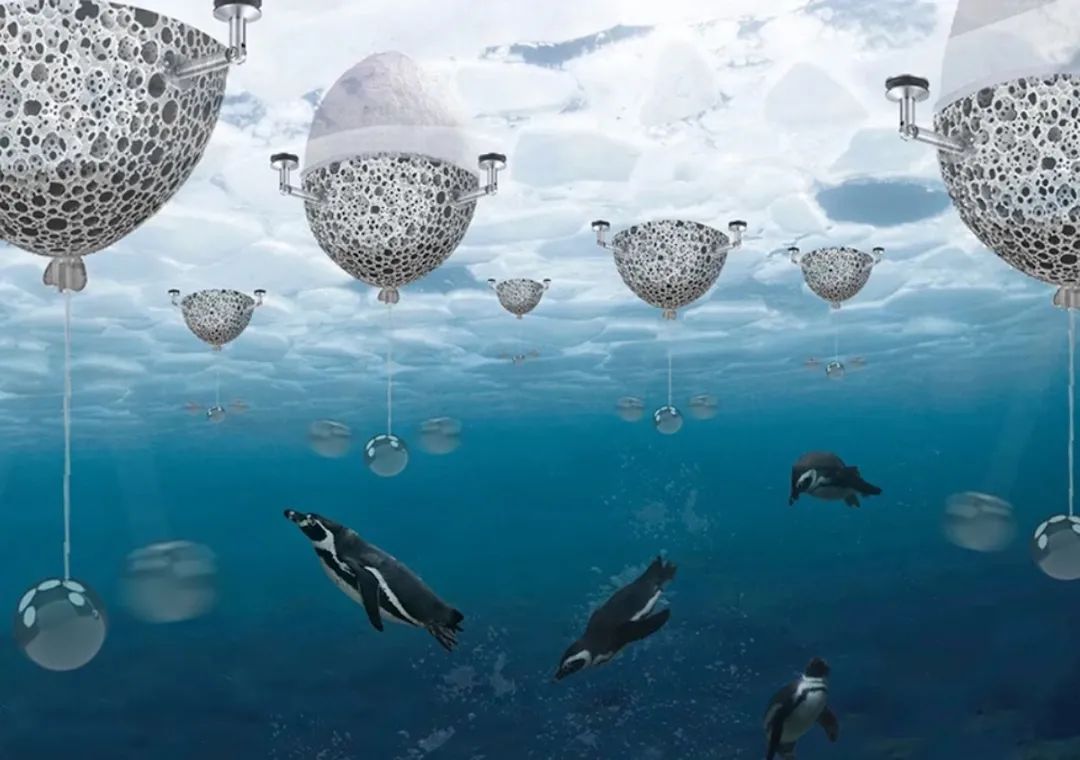
Specifically, the "Penguin Protection System" is a three-dimensional water hut inspired by the igloo architecture that everyone in Eskimo lives in, and based on the emperor penguin's habit of sleeping together for warmth. From a distance, this cabin looks like a small Eskimo home. If you look closely, you will find that the space can accommodate many penguins living together.

If you just look at the appearance of the hut, it is indeed not very outstanding. It is a typical polar house. But the most amazing thing about this building is that there is a sponge-like structure connected to the bottom of the igloo. There is a pendulum-like decoration hanging here, which is a physical organism that can transform and generate energy.
Whenever seawater flows, the pendulum will sway back and forth with the water flow, which can generate energy and activate a cooling device outside the igloo, effectively reducing the temperature near the igloo. When the flow of seawater is too large, it means that nearby glaciers are melting significantly, generating greater energy and cooling, and the nearby seawater can even re-form into ice.

Sajjad Navidi said he hopes to put such igloos on the sea on a large scale. When the penguins settle in their respective igloos, the cooling device underneath will continuously radiate cooling from the center of the igloo to the outside. In this way, the area between the igloos will become interconnected ice layers.
This means that the penguin colony using igloos as a carrier will become a large "water city" where emperor penguins can not only make a home here, but also play on the ice.

The most amazing thing is that the upper and lower structures of this igloo can be detached. The sponge cooling body underneath can be disassembled separately and placed in places where ice melting is particularly severe. Artificial cooling is a planned intervention in the local climate to slow down the melting of Antarctic glaciers, thereby effectively protecting the living environment of emperor penguins.
Currently, this design work has won many awards and inspired more architects. Today, as the environment is deteriorating day by day, architectural design is no longer simply about meeting the needs of human settlement and urban development, but also meets the needs of environmental protection.
Only by building a sustainable development ecology can we truly play an important role in improving the environment.

NO.2
Giant panda's home

Compared with the Internet rumors that the United States mistreats giant pandas and makes giant pandas live in dirty and messy environments, causing giant pandas to frequently get sick, have dirty hair, and lead miserable lives. The approach of the Copenhagen Zoo in Denmark can be regarded as a way to properly care for pandas. A role model and example of humane treatment of animals.
In December 2019, Copenhagen Zoo opened a long-awaited new attraction called Panda House. This panda house is designed to welcome two pandas from Chengdu, China, "Mao Er" and "Xing Er". The entire building cost US$24.2 million and covers an area of nearly 1,300 square meters (equivalent to three basketball courts).

At the opening ceremony of the Panda House, Princess Mary, the patron of Copenhagen Zoo, attended in person with her two children, Princess Josephine and Prince Vincent. Let’s not talk about whether the panda house itself is good-looking or not. This kind of serious attitude is worthy of praise. At least it proves that our pandas are not entrusted in vain.
The most valuable thing about Copenhagen Zoo is that it not only specially designed the space for pandas to live in, but also added many Chinese elements into the design concept. For example, Ten Thousand Things, etc., created two different living areas for the two panda guests who came to Denmark, but the two areas embraced each other.
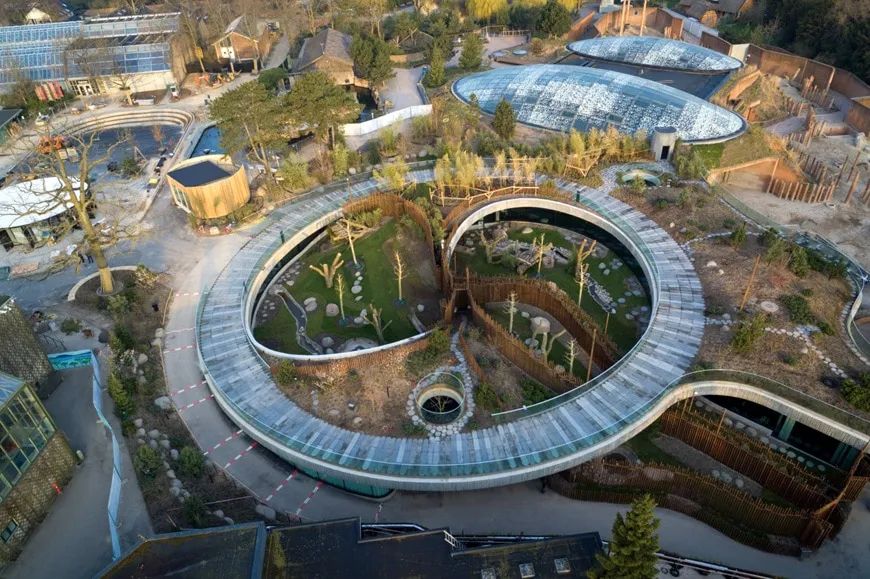
The Copenhagen Panda House was designed by two professional teams, BIG Bjarke Ingels Group and Schonherr Landscape Architects.
This team brings together famous architects, engineering designers, panda experts, zoologists, and professional veterinarians to discuss and build together. It aims to use Copenhagen Zoo as the anchor to design and create the most comfortable panda living environment that is most suitable for pandas' living habits, in order to truly protect rare animals around the world.


When explaining the design concept of the Panda House, David Zach, head of BIG Bjarke Ingels Group, explained: Giant pandas like to be solitary except during mating season. So we separated the male and female pandas from each other so that they wouldn't smell each other and wouldn't come into physical contact.
Therefore, the two different area designs are built based on this habit, allowing the two giant pandas to live alone in peacetime, independent and harmonious with each other. Generally speaking, the design of the panda house is to enable humans to feel that when they come here, they are guests in the panda's home, rather than that the panda is an exotic guest from a distant place.

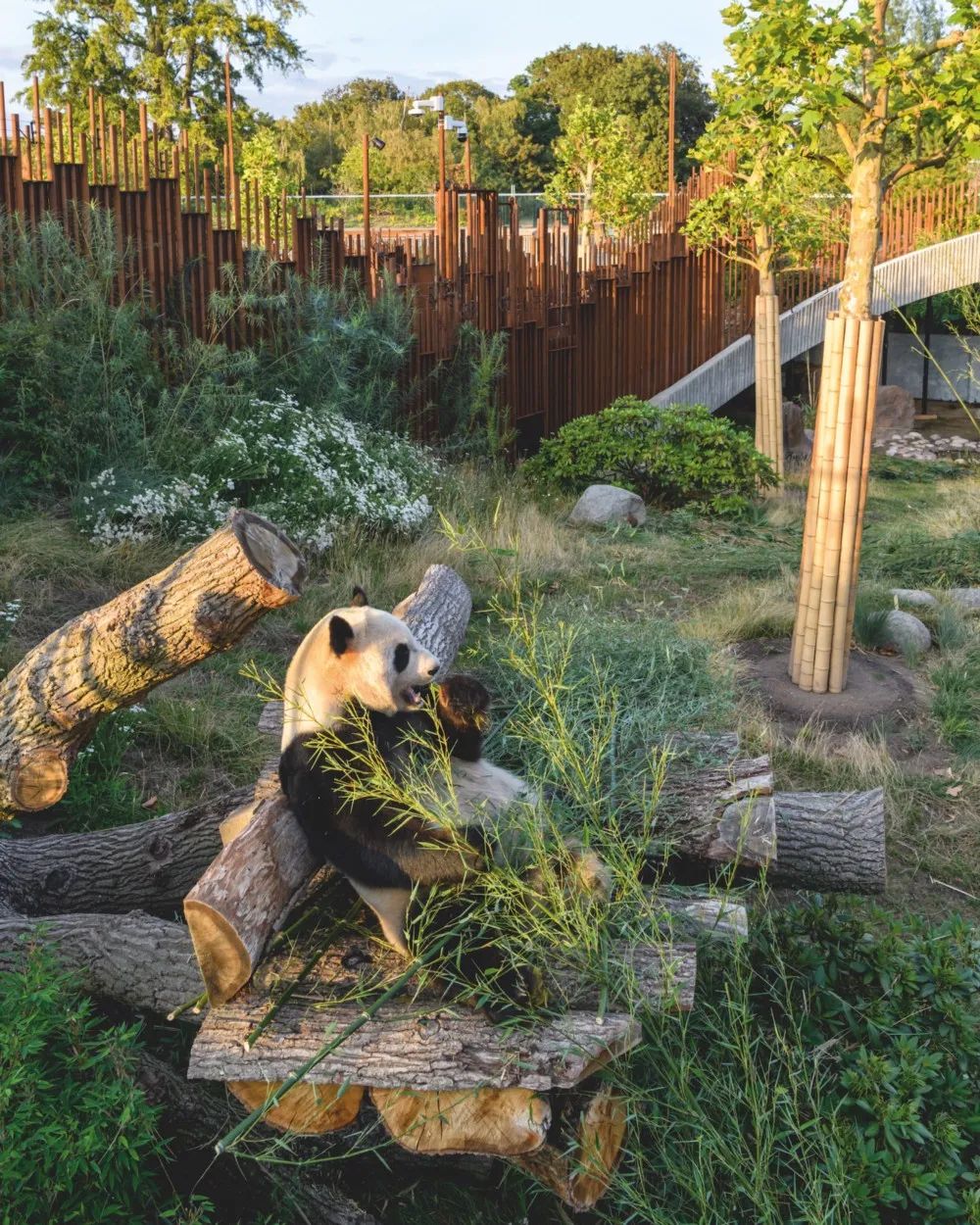
Not only that, because the environment where giant pandas live requires not only shade, but also water and sunlight, two different environments were specially constructed: a dense mist forest, and a light green bamboo forest. Ensure "Mao Er" and "Star Er", you can choose different living spaces according to the season, temperature, and preferences.
To be honest, seeing that pandas like to live alone and are so picky about their environment, I finally understand why they are rare animals.

But looking at the entire building, you can see that Copenhagen Zoo is really very thoughtful.
The interior space of the zoo is very large, covered with various plants, rocks, climbing trees and tree trunks, giving the giant pandas space to rest, play, and eat. At the same time, the use of various elements such as basins, streams, waterfalls, etc. can enrich them. life, and at the same time plays a physical role in cooling down.


For tourists, there is a restaurant next to the panda living area. The upper floor overlooks the entire giant panda living space, while the lower floor is covered with local Nordic plants and bamboo forests leading to the panda living area, ensuring that the line of sight and the landscape are on the same level, making visitors feel as if they are actually there.




It can be said that good architecture is full of humanistic care. The goal of humanistic care is not only endangered species, but also rare human animals, including animals and pets living around humans. Creating diverse livable spaces for them should also be incorporated into the building.
Especially when pets have become an essential part of human life.



NO.3
pet hotel
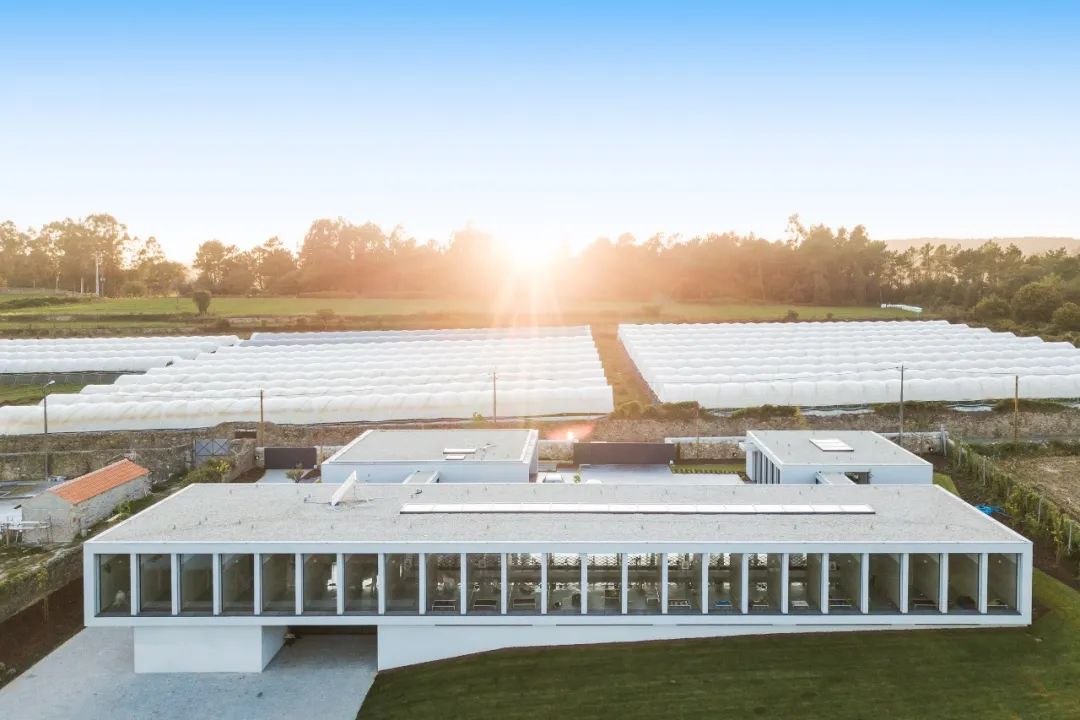
For modern people, the biggest problem they face during vacation is what should they do with their pets? Although you can temporarily let relatives and friends keep it for you, or send it directly to a pet store for storage. But in fact, many times, when pets become part of human emotional companionship, many people want to take their pets to play with them.



In order to meet the needs of these pet owners, pet hotels came into being. The Canine and Feline Hotel located in Parada, Portugal, is a holiday paradise for pets and pet owners. Designed by the renowned local design studio Raulino Silva Arquitecto, the hotel is built in an ancient and scenic vineyard.
The vineyard not only has pleasant scenery, but is also very convenient for those who can't live without their pets. Whether they are on vacation or simply on business, pets are welcome, and the hotel has grooming rooms, swimming pools, veterinary rooms, and play areas for dogs and cats.
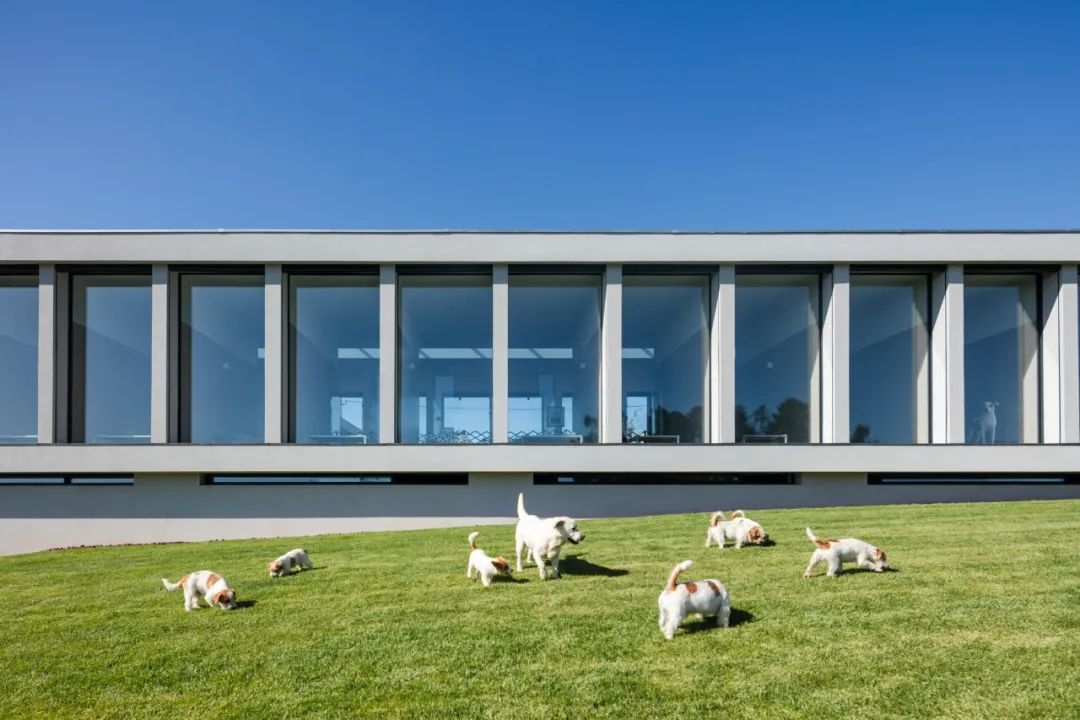

From the appearance, the entire building consists of three gray and white areas. It is square and regular, but the internal structure is very fine. There are three different interconnected areas, which are divided into cat living area, dog living area, and all public services. space.
The purpose of this is to prevent conflicts between pets with different attributes, and at the same time, pet owners will not be disturbed.
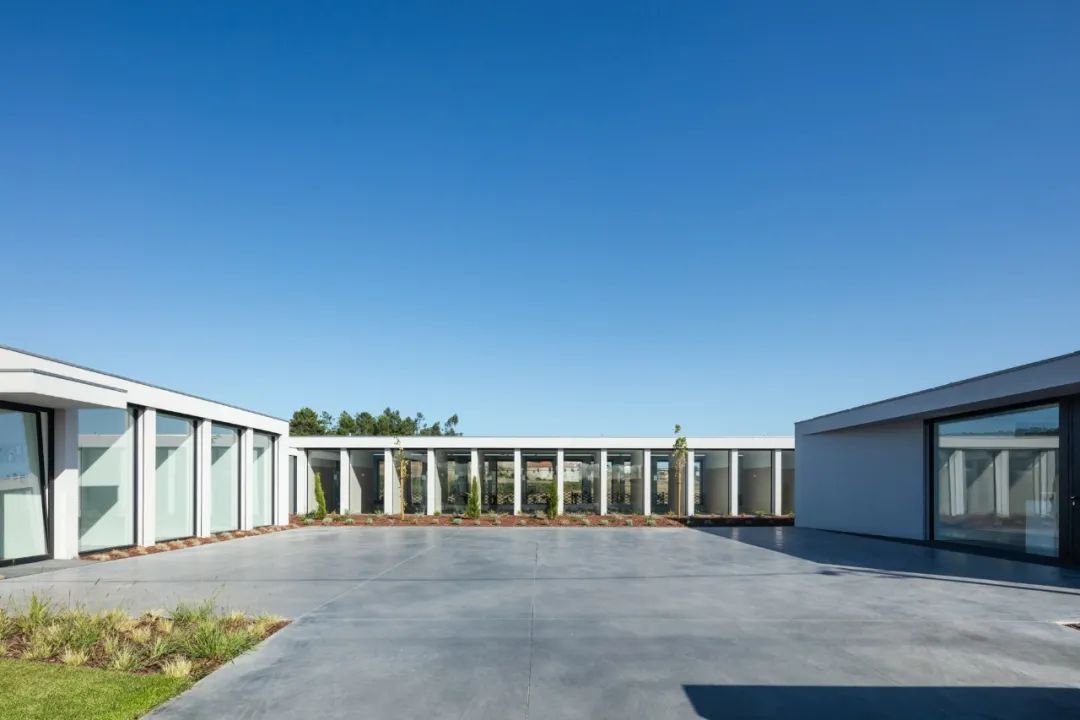

The first area is a single-story building, which is also a public area with a service desk, small shop, storage room, office, relaxation space for pet owners, etc.;
The second area is very large, using the existing topography to create a two-story building. They connect the entrance area of the building and the animal playground below. There is a living space upstairs that can accommodate 41 dogs, and the overall layout is very warm and comfortable.
The third area is a paradise for cats. Although it is not large, with only 12 rooms, it is surrounded by a small garden, which is very suitable for cats who like to climb up.



The designer expressed the hope that future hotel buildings will pay more attention to pets. Pets are also an integral part of travel and vacation life, and their living habits and living spaces must also be included in architectural design.



It is worth mentioning that this pet hotel has been shortlisted for the Hotel Architecture of the Year Award in the 2020 Dezeen Awards, which is also an award that unleashes the trend of incorporating pets into architectural design.
NO.4
cat house

Ieoh Ming Pei said: "Architecture is a form of social art." Social art often originates from real life, precisely because in modern society, pets have become human companions, friends...

The number of pet-owning groups is getting larger and larger, so modern home architecture, based on humanistic considerations, must also incorporate the living space and living habits of pets into home architecture.
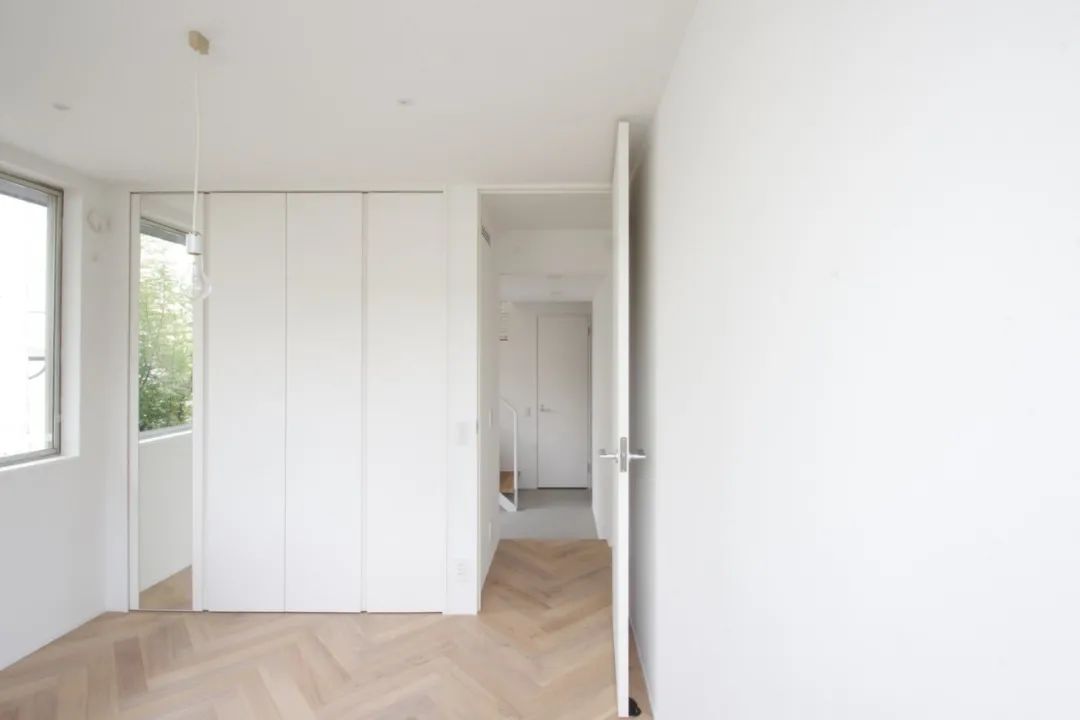
The architectural "Cat House" from Tokyo, Japan, was designed and built by the Seiji Iwama Architects team as a space where cats and humans coexist harmoniously.

Architect Seiji Iwama is a veteran cat lover. He discovered that no matter how much people claim to love animals, there is rarely room for animals in their homes. People's demand for pet companions is still just to buy some toys for them or put a cat bed.

Based on his love for cats, he decided to build a house from scratch. From the exterior structure to the internal space, the cat's living habits are taken into consideration to meet the cat's living needs to the maximum extent.

This building is a renovation and renovation of a nearly 30-year-old dilapidated building. The architect opened up the interior space of the entire building and maintained a criss-crossing of beams and vertical beams to satisfy the cat’s climbing nature. Many cat lovers may not realize that cats’ favorite thing to do is to climb on roofs and rafters.

Considering that cats love to bask in the sun, Seiji Iwama set up the living room on the second floor. This will ensure that whenever your cat sleeps on the bed, the sun will hit her just right. For Seiji Iwama, the sun shining on the bed and the cat sleeping on the bed is the happiest life on earth.

In addition to meeting the cat's need to climb the beams, shelves are also set up on the wall. In this way, cats can climb around the entire building, and even the stairs are designed to ensure that cats can jump freely. All I can say is that it is really comfortable for cats to live here.

Although many spaces inside the building have been opened up, it also makes the field of vision wider. Owners can see what their cats are doing and playing anytime and anywhere.
NO.5
Doghouse

Where there are cat houses, there are dog houses. As one of the friendliest pets on earth, dogs can be called humans’ most loyal companions. But few people know that dogs actually have their own emotions. They are pets that need personal space. Compared with cats who like to roam around and climb everywhere, dogs like to live in holes.

For dogs, living in holes is partly because of their nature, and partly because dogs are actually animals that are very afraid of noise. Especially the sound of fireworks and firecrackers and the sudden start of a car will bring great panic to them.

This is because dogs have very sensitive hearing and can hear sounds four times farther than humans. This means that many times, even sounds that are not harmful to us humans can cause physical and mental distress to dogs. Therefore, the design of a dog house basically only needs to follow two points: there must be a dog hole, and the material of the dog hole must be noise-proof to ensure that the dog can sleep well at night.

Architects Matthew Kennedy and Mark Erickson's Studio North have built a two-storey building called "Withrow Laneway House" in Calgary.

From the appearance of this building, it is difficult to find anything special, but if you take into account the living habits of pet dogs, you can appreciate the artistic ingenuity in the many details of the architect.
First of all, many pet dog owners will inevitably decorate their homes with colorful decorations in order to let their dogs live in a beautiful and warm environment. But unfortunately, dogs’ ability to distinguish colors is very weak. Some scientists even say that their world is composed of black, white and gray.

So there is no point in trying to please and appease dogs with color. Keeping more green plants at home will make dogs with a sensitive sense of smell feel more comfortable.
Compared with pet cats, pet dogs are social animals and have certain needs for lively interpersonal relationships. However, because they are sensitive to sound, they cannot have too many sounds of cars and horses. Therefore, "Withrow Laneway House" was very selective in its location selection. It is located in an old community, which is as close to community life as possible while being far away from the hustle and bustle of urban industry.
Considering that dogs’ hearing and sense of smell are very sensitive, the building materials are all natural logs, which will not irritate the dogs. At the same time, the dog hole in the stairwell specially designed for dogs has a large internal space and good sound insulation effect, ensuring that dogs can stay in it with peace of mind.

Whenever I have free time, I take my dog through the residential community buildings and play ball on the lawn. After returning home, it returns to quietness and ensures the dog's sleep. It can be said that it is very consistent with the physical and psychological needs of the pet dog.
When modern architecture incorporates the nature and living habits of pets into architecture and interior design, we will find that many of our current urban buildings lack the design to provide living space for stray cats and dogs, as well as the lack of living space for pet cats and dogs. considerations, not to mention protecting the habitats of wild animals.
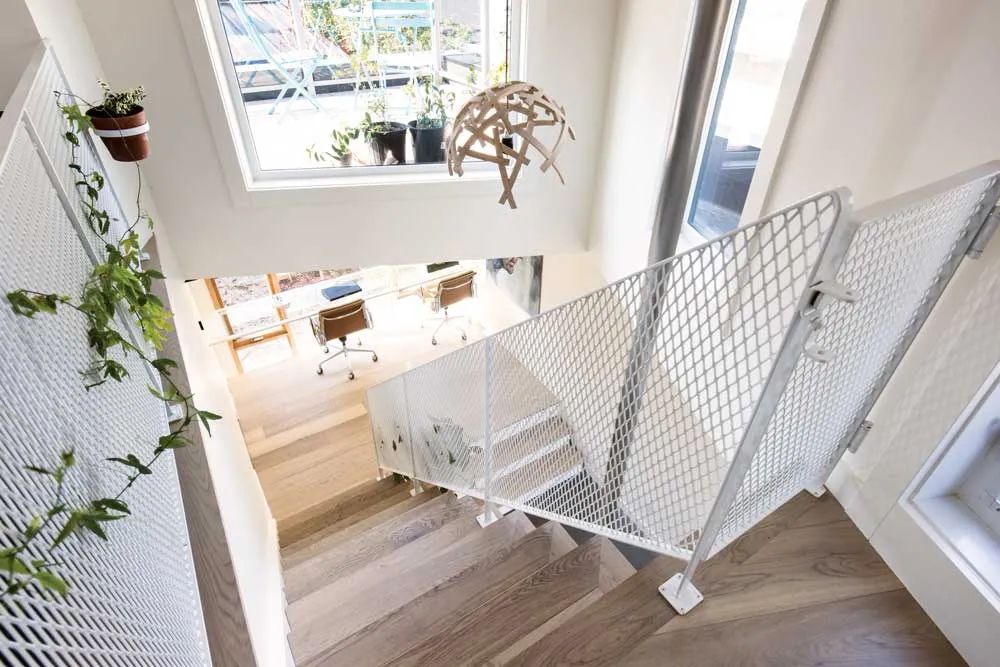
If the living space of animals has to be compressed because of the existence of humans, it is undoubtedly a very inhumane thing. In the history of human architecture, after many years of "people-oriented" development, the pursuit of harmonious coexistence between humans and animals, buildings for wild animals, and urban buildings for pets may become a new architectural direction in the future.
animal tags:
We created this article in conjunction with AI technology, then made sure it was fact-checked and edited by a Animals Top editor.